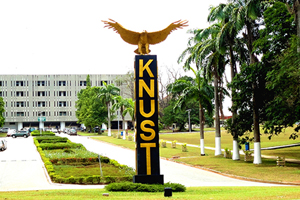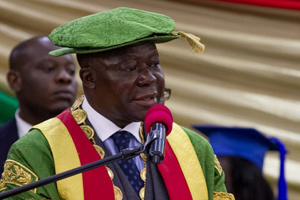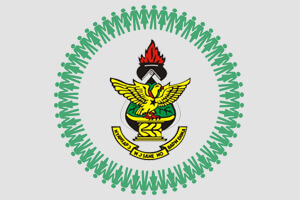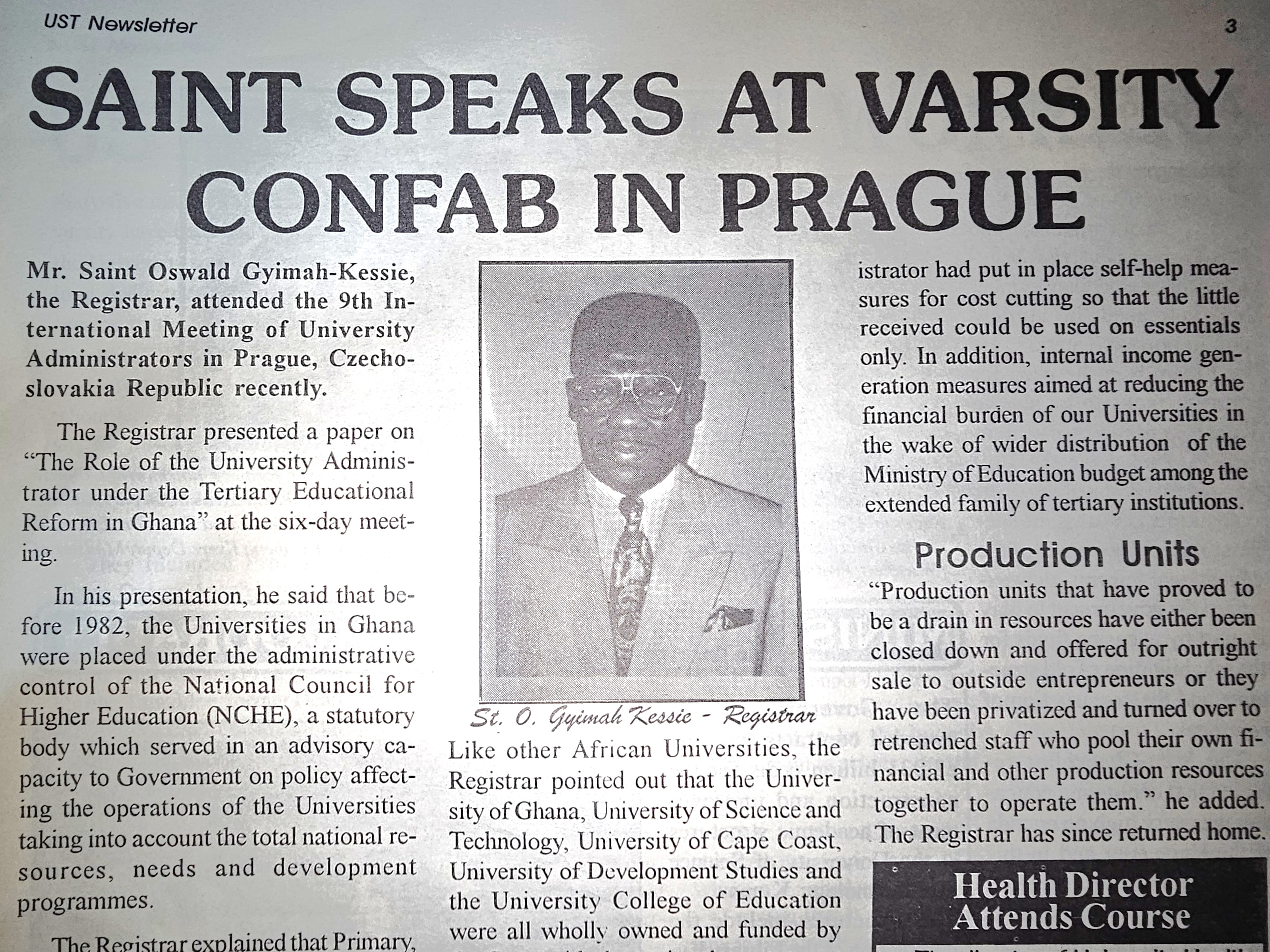The recent passing of Daasebre Osei Bonsu II, known in private life as Saint Oswald Gyimah-Kessie, former Registrar of the Kwame Nkrumah University of Science and Technology (KNUST), Kumasi, and Mamponghene, has prompted a reflection on an era defined by his administrative innovation, resilience, and profound dedication to the development of higher education in Ghana.
A compelling testament to his impact came from the international stage. Representing Ghana at the 9th International Meeting of University Administrators in Prague, Czechoslovakia, in May 1995, Mr. Gyimah-Kessie presented a powerful paper titled “The Role of the University Administrator under the Tertiary Educational Reform in Ghana.”
His insights from this conference were notably captured in the June 1995 edition of the UST Newsletter.
As Ghana moved towards a unified tertiary education structure in the early 1990s, Mr. Gyimah-Kessie's profound insights were instrumental in shaping the recommendations of the University Rationalisation Committee. This committee ultimately placed all tertiary institutions under the oversight of the Ministry of Education.
He viewed this as a crucial reform necessary to ensure coordination and the equitable distribution of scarce educational resources.
In his Prague presentation, he painted a candid picture of the Ghanaian university system, its challenges, and the practical measures local administrators were undertaking to ensure sustainability.
He recalled that before 1982, "the Universities in Ghana were placed under the administrative control of the National Council for Higher Education (NCHE), a statutory body which served in an advisory capacity to Government on policy affecting the operations of the Universities.” However, he noted that the NCHE eventually lost credibility and relevance.
“In 1982 the National Council for Higher Education was dissolved on the grounds that it had failed to be effective in carrying out its task without due recognition of national interest and its apparent reduction to the position of a mere conduit for uncoordinated individual university requests,” he explained.
His leadership coincided with a pivotal time when universities such as KNUST, the University of Ghana, the University of Cape Coast, the University for Development Studies, and the University of Education, Winneba, were transitioning from full government dependence to more diversified and sustainable funding models.
“Like other African universities,” he stated, “our universities were wholly owned and funded by the State with the national government providing virtually the whole of the capital and recurrent funds required for operations. But levels of funding tend to fluctuate as well as diminish under relentless pressure from inflation.”
At the height of economic difficulty and fluctuating state support, Mr. Gyimah-Kessie emerged as a staunch champion of institutional self-reliance. He highlighted how universities, under constrained budgets, had begun to implement innovative cost-cutting and income-generating strategies.
“Production units that have proved to be a drain in resources have either been closed down and offered for outright sale to outside entrepreneurs, or they have been privatized and turned over to retrenched staff who pool their own financial and other production resources together to operate them,” he explained in his 1995 address.
He also underscored how funding shortfalls from the government led to “a process of increasing deterioration in facilities and in their quality of teaching and service at a time when more is expected from them.”
Despite these obstacles, he was instrumental in encouraging university administrators to devise practical, locally sustainable solutions to keep institutions functioning.
“The university Administrator had put in place self-help measures for cost-cutting so that the little received could be used on essentials only,” he said.
Final Burial Rites for Daasebre Osei Bonsu II would be held from 6th - 9th June, 2025.
| Story by Emmanuel Kwasi Debrah (URO) | |


















